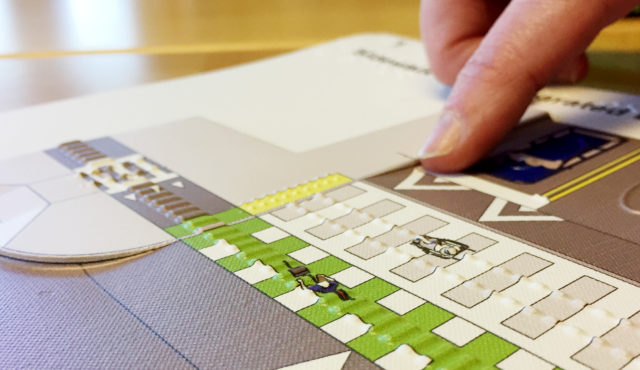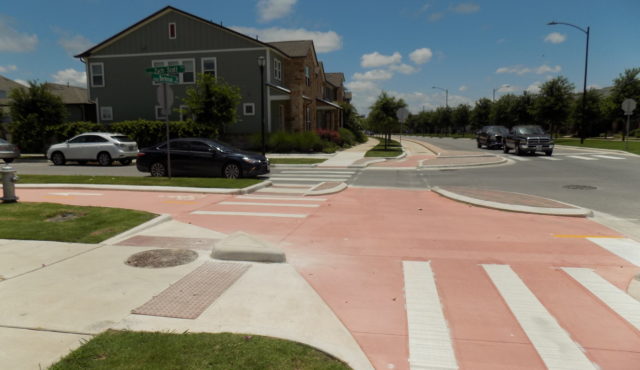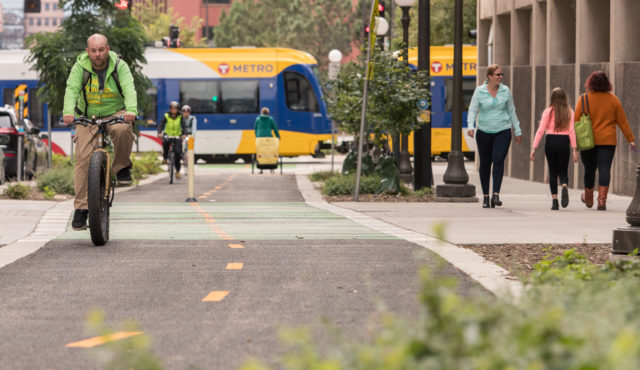For a version of this FHWA resource that is compatible with screen readers, please click here.
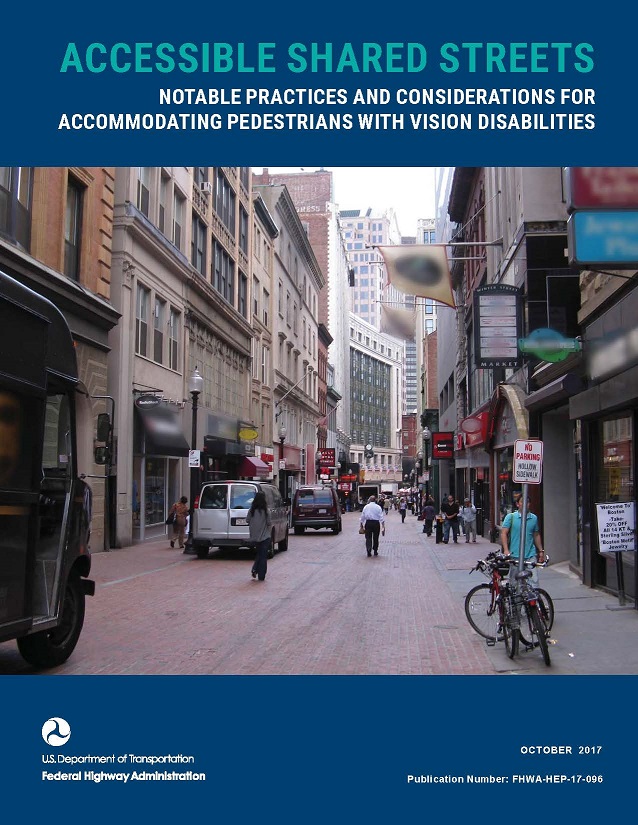
Yesterday, the Federal Highway Administration (FHWA) unveiled a groundbreaking new resource on planning and designing shared streets to accommodate people with vision disabilities. The first report of its kind, Accessible Shared Streets: Notable Practices and Considerations for Accommodating Pedestrians with Vision Disabilities introduces accessible design principles for shared streets based on detailed research and extensive outreach, equipping communities to pursue new designs that are accessible for people with vision disabilities. Drawing from notable practices, public outreach, and field analysis from multiple US cities, this resource pushes the practice of shared street design towards accessibility for all users. Toole Design was proud to be part of the team that helped FHWA bring this innovative resource to the public.
See an accessible version of the FHWA resource here.
Shared streets are a combination of street and public space, where pedestrians, bicyclists, and motor vehicles are intended to mix. Characterized by low motor vehicle speeds and volumes, lack of vertical curbs, and a design emphasizing interaction between modes, shared streets can improve traffic safety, foster economic development, and create lively public spaces. However, shared streets can pose significant challenges to pedestrians with vision disabilities, since they lack cues like vertical curbs that they use for navigation, and depend on street users to negotiate the right-of-way through eye contact, gestures, and nods.
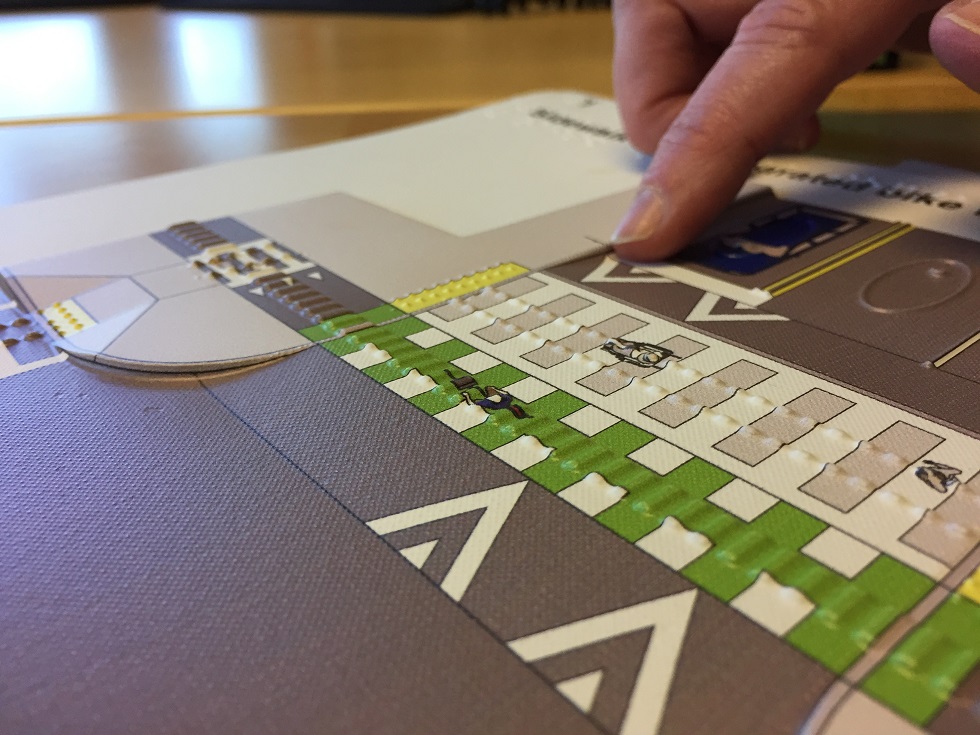 To better understand the challenge that shared streets can present to people with vision disabilities, the project team developed an extensive public engagement process that included focus groups, peer exchanges, interviews, and multi-day workshops in cities around the US. Along with FHWA, members of the US Access Board, and key contributors like Accessible Design for the Blind, TDG staff prepared a variety of new ways to share concept designs with members of the vision disability community, such as tactile maps to show workshop participants with a range of vision disabilities what these street design concepts looked like through touch and feel. Workshops also included extensive walking tours of innovative street design concepts, allowing the team to get first-hand information from contributors with vision disabilities about their experience.
To better understand the challenge that shared streets can present to people with vision disabilities, the project team developed an extensive public engagement process that included focus groups, peer exchanges, interviews, and multi-day workshops in cities around the US. Along with FHWA, members of the US Access Board, and key contributors like Accessible Design for the Blind, TDG staff prepared a variety of new ways to share concept designs with members of the vision disability community, such as tactile maps to show workshop participants with a range of vision disabilities what these street design concepts looked like through touch and feel. Workshops also included extensive walking tours of innovative street design concepts, allowing the team to get first-hand information from contributors with vision disabilities about their experience.
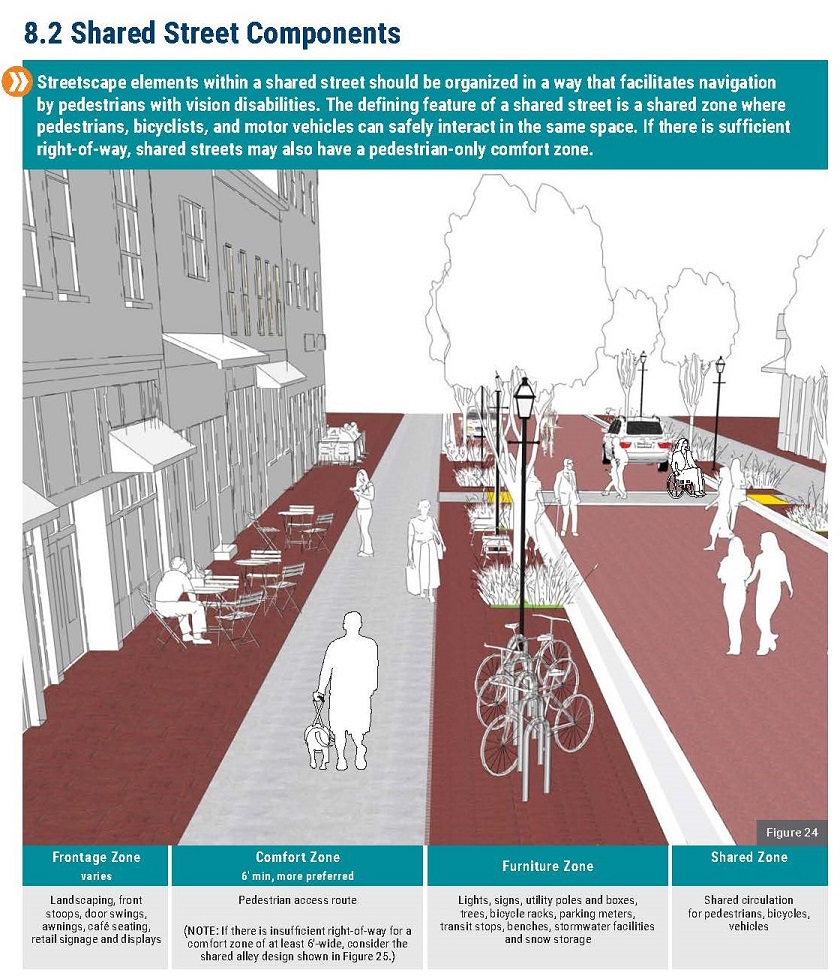 Accessible Shared Streets is one result of this in-depth exploration of how pedestrians with vision disabilities navigate in the public right of way. Such exploration is especially important now, as new street design concepts like shared streets and separated bike lanes become more widely adopted across the country. Accessible Shared Streets describes the challenges faced by pedestrians with vision disabilities and provides a toolbox of strategies, with detailed graphics, for planning and designing shared streets that are accessible to people with vision disabilities.
Accessible Shared Streets is one result of this in-depth exploration of how pedestrians with vision disabilities navigate in the public right of way. Such exploration is especially important now, as new street design concepts like shared streets and separated bike lanes become more widely adopted across the country. Accessible Shared Streets describes the challenges faced by pedestrians with vision disabilities and provides a toolbox of strategies, with detailed graphics, for planning and designing shared streets that are accessible to people with vision disabilities.
This resource is an important first step for communities across the United States who want to ensure that shared streets are accessible to all users. While it provides many valuable solutions to current challenges, it also highlights areas where additional guidance is needed. Toole Design Group is grateful to have had the opportunity to lead this project for FHWA, alongside Accessible Design for the Blind, KFH Group, and Cambridge Systematics. Accessible Shared Streets expands available guidance for both shared streets design and engagement of people with vision disabilities, and represents a major change to how communities approach design for all users.
For a version of this FHWA resource that is compatible with screen readers, please click here.
